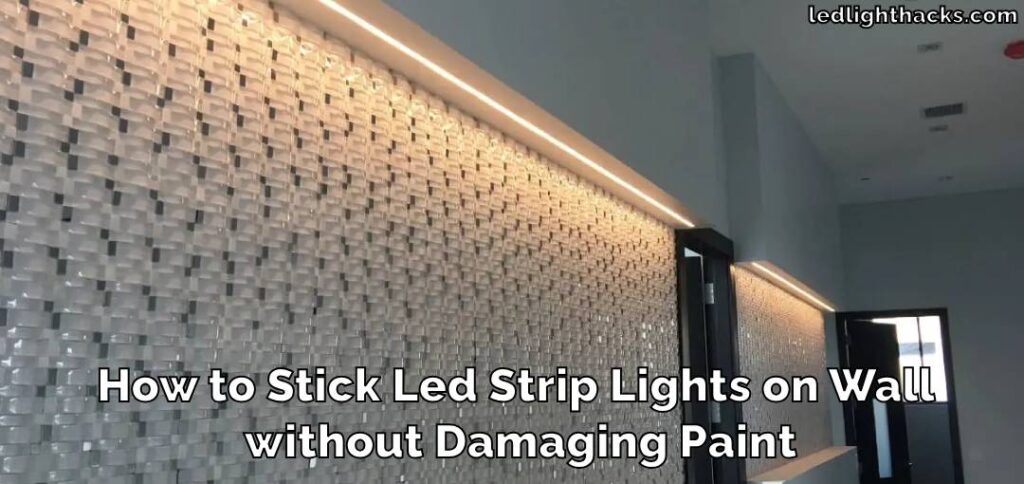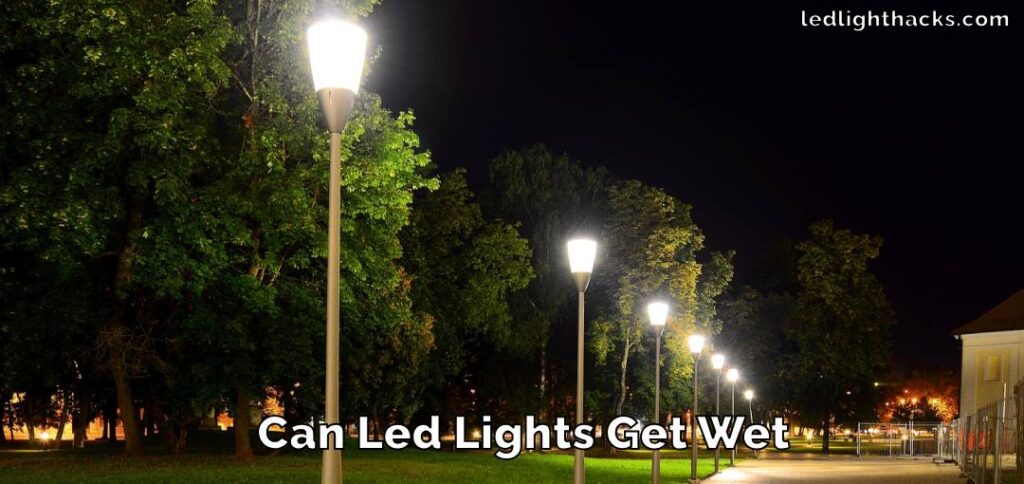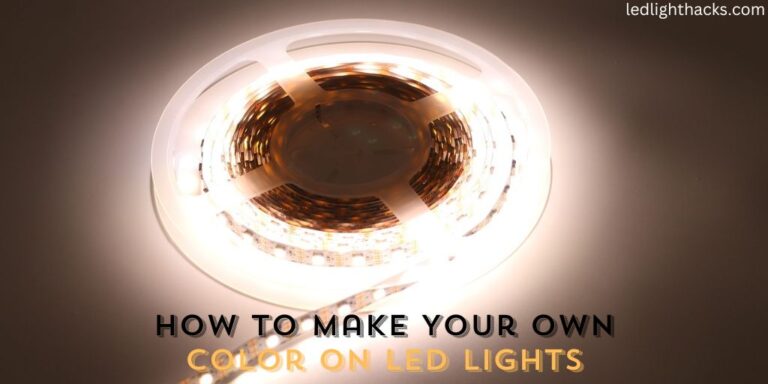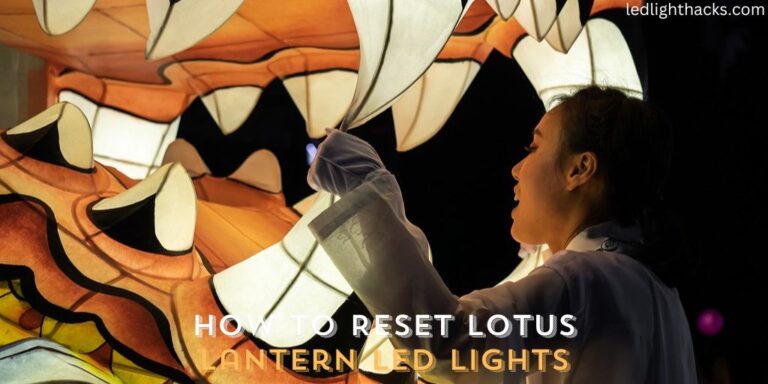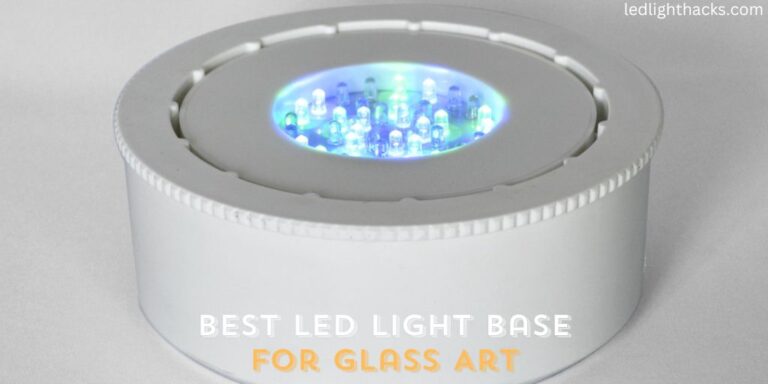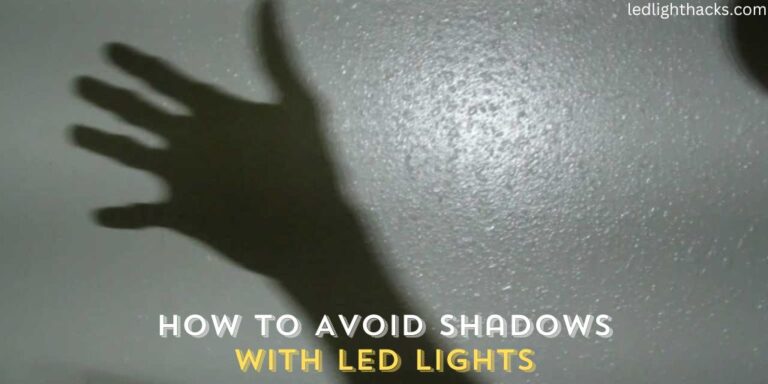How to Make Rose Gold on LED Lights
LED lighting has truly changed the game when it comes to brightening our homes and workspaces. Among the vast palette of colors that LED technology brings to the table, rose gold emerges as a standout hue. Known for its warmth and refined elegance, rose gold lighting can add a layer of sophistication and charm to any interior.
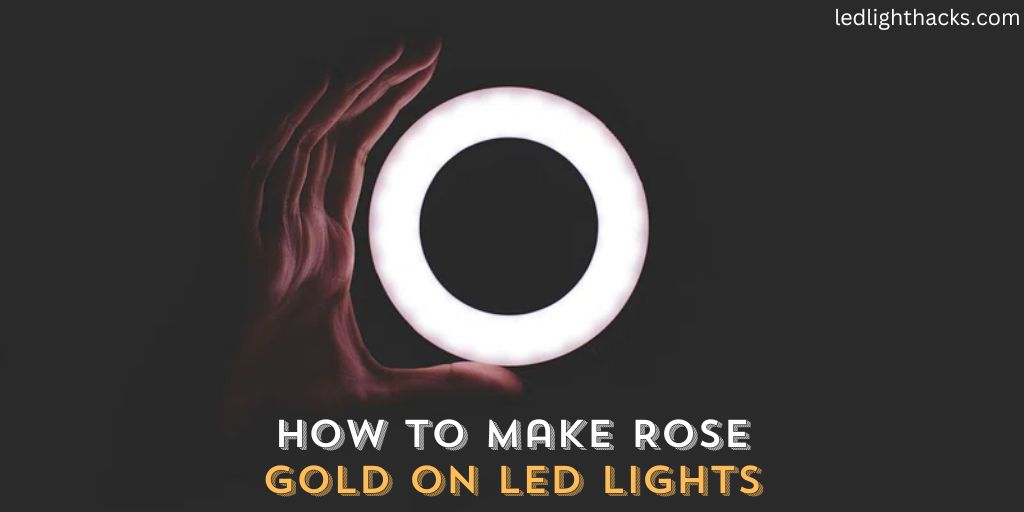
In this piece, we delve into the captivating process of how to make rose gold on LED lights, a task that blends technological savvy with a sharp eye for design. The allure of casting rooms in this exquisite color has captured the interest of both technology lovers and design enthusiasts.
Learning how to tweak LED light settings to produce the rose gold effect is an exciting journey. It not only enhances the aesthetic appeal of a space but also allows for a personalized touch that can completely transform its ambiance.
Why You Should Make Rose Gold on LED Lights
The allure of rose gold lies in its ability to create a cozy yet luxurious atmosphere. This color has been a trendsetter in various industries, from jewelry to smartphones, and now to lighting.
Incorporating rose gold LED lights into your space can change the mood, offering a warm, inviting glow that’s softer than stark white lights yet more modern and lively than traditional yellow tones.
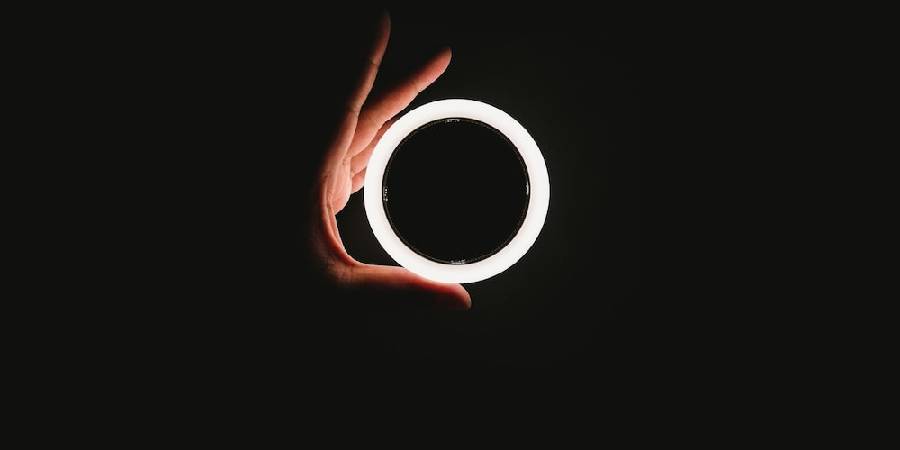
It’s the perfect balance for those seeking a contemporary look without sacrificing the comfort of warm lighting. The versatility of rose gold also means it pairs beautifully with a wide range of interior palettes, making it a universally appealing choice.
Tools We Need to Make Rose Gold on LED Lights
To craft the ideal rose gold illumination with LED lights, a few essential tools are necessary. Here’s a straightforward list to guide you:
- RGB LED Light Strip: At the heart of your project, this strip should be capable of displaying a broad spectrum of colors. RGB stands for Red, Green, and Blue, and these LED strips can mix these primary colors to create a wide range of shades, including the desired rose gold.
- Power Source: A stable and reliable power source is vital. Ensure it matches the voltage and current requirements of your LED strip to prevent any electrical issues.
- LED Controller: This device lets you adjust the color and intensity of the LED lights. A simple controller works well, but for more flexibility, consider a controller that offers a wider range of settings.
- Smart LED Controller (Optional): For those who love tech-savvy solutions, a smart controller, which can be operated via a smartphone app, is a great addition. It provides the convenience of adjusting your LED colors remotely and often includes more precise controls for fine-tuning the shades.
- Connectors and Cabling: Depending on your setup, you might need connectors and cables to link multiple LED strips or to extend the reach of your lights to the power source.
- Mounting Supplies: Depending on where you want to install your LED strips, you’ll need appropriate mounting supplies. This can include adhesive tapes, clips, or mounting brackets to ensure your lights stay securely in place.
- Manual or Digital Color Wheel (Optional): A color wheel can be a handy tool to visually guide you in mixing primary colors to achieve your desired rose gold hue.
Each of these tools plays a role in the successful creation of rose gold lighting. While the LED strip is your primary tool, the controller and power source are equally important for ensuring the right hue and brightness.
Optional tools like a smart controller or a color wheel can add convenience and precision to your setup, making the process more enjoyable and less of a guesswork.
How to Make Rose Gold on LED Lights
Creating the rose gold hue using LED lights involves blending colors in a way that mimics the soft, warm glow characteristic of rose gold. Since LED lights typically use a combination of red, green, and blue (RGB) to create various colors, achieving rose gold requires adjusting these colors to get the right balance. Here’s how you can try to create a rose gold color with LED lights:
Understanding LED Technology
Rose gold is a blend of gold (yellowish hue) with a touch of coppery red, creating a soft, warm pinkish gold. To replicate this with LED lights, you’ll be mixing primarily red and green, with a tiny bit of blue.
Selecting the Right LED Strip
Begin by setting your LED to display red. Red forms the base of the rose gold color, providing the warmth it needs.
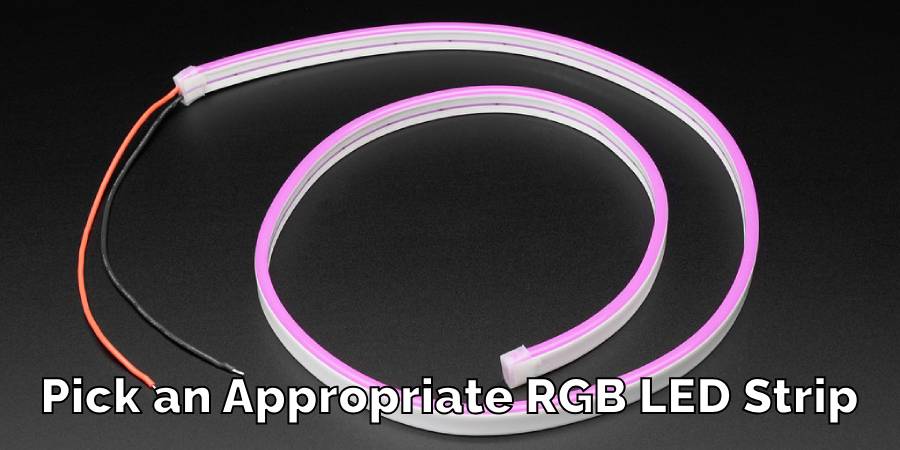
Add Green
Slowly introduce green into the mix. The green should be added in much smaller amounts compared to red. The aim is to slightly dilute the red and bring in the gold aspect of rose gold.
Incorporate a Hint of Blue
Add a very small amount of blue. Be cautious with blue as it can quickly overpower the other colors and shift the hue away from rose gold. The blue is just there to add a bit of depth and balance.
Adjust and Experiment
The key to achieving the perfect rose gold shade is experimentation. Adjust the RGB values gradually and observe the changes. The exact settings can vary depending on your LED lights and the effect you’re aiming for.
Use Technology
If your LED lights come with a smartphone app or remote control, use it to make precise adjustments. Some apps might offer color palettes or custom settings where you can save your rose gold once you’ve nailed it.
Test the Lighting in Your Space
Once you’ve adjusted your LED lights, test the color in your intended space. Different surroundings and surfaces can affect how the color is perceived. You might need to make further adjustments based on your room’s specific lighting conditions and decor.
Installing the LED Strip
After testing, Carefully install the LED strip where you want your rose gold light. Ensure that it’s placed evenly for a uniform light distribution. This step is important because uneven placement can lead to patches of light, disrupting the overall effect.

Achieving rose gold with LED lights is about finding the right balance and shade that suits your taste and complements your space. With patience and a bit of tweaking, you can create a cozy and sophisticated ambiance with your LED lighting.
Precaution while Making Rose Gold on LED Lights
When you’re creating rose gold lighting with LED strips, it’s crucial to keep safety at the forefront. Here are some key precautions to consider:
- Proper Installation: Make sure your LED strips are installed correctly and securely. This includes checking that the strips are firmly attached to a surface that can support them and ensuring that all connections and wiring are stable and safe. A loose installation can lead to electrical hazards.
- Heat Management: LEDs can generate heat, so it’s important to ensure they are not covered or enclosed in a way that prevents proper heat dissipation. Avoid placing them near flammable materials and make sure there’s enough air circulation around the LEDs.
- Matching Power Supply: Use a power supply that matches the LED strip’s voltage and current requirements. This compatibility is crucial to prevent overheating and potential damage to the LEDs. Overheating not only shortens the lifespan of the LEDs but can also pose a fire risk.
- Eye Safety: When adjusting the colors on your LED strip, especially when trying to achieve the perfect rose gold shade, work in a well-lit environment. This precaution helps prevent eye strain. It’s also advisable not to look directly into the LEDs for extended periods.
- Electrical Safety: If you are not familiar with electrical installations, consider seeking help from a professional. Dealing with electrical components can be risky if you lack experience.
- Testing Before Final Installation: Before permanently fixing the LED strip in place, test it to ensure it works properly and achieves the desired color effect. This step helps identify any issues before the strip becomes more difficult to access or adjust.
- Avoiding Water Contact: If your LED strips are not water-resistant, ensure they are installed in a dry area. Exposure to water or high humidity can damage the strips and increase the risk of electrical accidents.
- Regular Checks: Periodically check your LED setup for any signs of wear and tear, especially if they are installed in high-traffic areas. Regular maintenance can prevent accidents and ensure your LEDs last longer.
By following these precautions, you can safely enjoy the beauty of rose gold lighting in your space. Remember, safety is as important as aesthetics when working with electrical lighting.
FAQ’s
What Colors Make a Rose Color?
A classic rose color, reminiscent of the flower itself, is typically made by mixing red and white. Imagine adding white paint to red – as you increase the amount of white, the red becomes lighter, turning into various shades of rose. From deep, romantic rose hues to soft, pastel tones, the amount of white you mix in changes the final shade dramatically.
What Color is a Permanent Rose?
Permanent rose is a vivid, eye-catching shade that resembles a mix of magenta and pink. It’s a color known for its depth and intensity. The term ‘permanent’ in this context means that the color stays vibrant for a long time without losing its richness. This durability makes it a favored choice in art and fabric dyes.
What Colors Go With Light Rose?
Light rose is a versatile color that pairs beautifully with a wide range of colors. For a soft, harmonious look, combine it with neutrals like white, cream, or light gray. These colors complement the subtlety of light rose.
If you’re looking for a bolder contrast, try pairing it with darker shades like navy or black. These colors create a striking visual contrast that can make light rose stand out. For a touch of sophistication, metallic colors like gold or silver can add an elegant flair, enhancing the delicate nature of light rose.
Is Rose a Real Color?
Rose is a recognized color, typically seen as a variation of pink or red. Its inspiration comes from the natural color of rose petals.
In design and fashion, rose is a sought-after color because of its versatility and warm appeal. It can range from soft and soothing to bold and dramatic, making it a favorite in various applications – from clothing and accessories to interior design.
Conclusion
Creating rose gold on LED lights is an art that combines technology with a flair for design. It allows individuals to personalize their spaces with a color that exudes warmth, elegance, and a contemporary feel. This article has explored how to make rose gold on LED lights.
While the process requires attention to detail, the result is a beautiful, ambient light that can transform any room. Remember to take precautions when working with LEDs and to adjust the color to your personal preference and the specific needs of your space.
With this knowledge, you’re well-equipped to bring the sophisticated charm of rose gold into your lighting design, enhancing the ambiance of your home or workplace with this trendy yet timeless hue.
How to Change a Light Switch without Turning Off the Power
Mastering the skill of changing a light switch without turning off the power holds great…
How To Stick LED Strip Lights On Wall Without Damaging Paint
LED light strips have surged in popularity, adorning homes and spaces with their vibrant colors…
Can Led Lights Get Wet
LED lights are everywhere, from homes to city streets, known for their efficiency and brightness….
Creative Ways to Use LED Strip Lights in Your Home
LED strip lights, those brilliant strips of technology, serve as a beacon of innovation in…
Can Solar Lights Catch Fire
Solar garden lights are your go-to pal for lighting up your backyard oasis while keeping…
What gauge wire for LED lights
When diving into LED lighting, one aspect that might not catch your eye at first…


